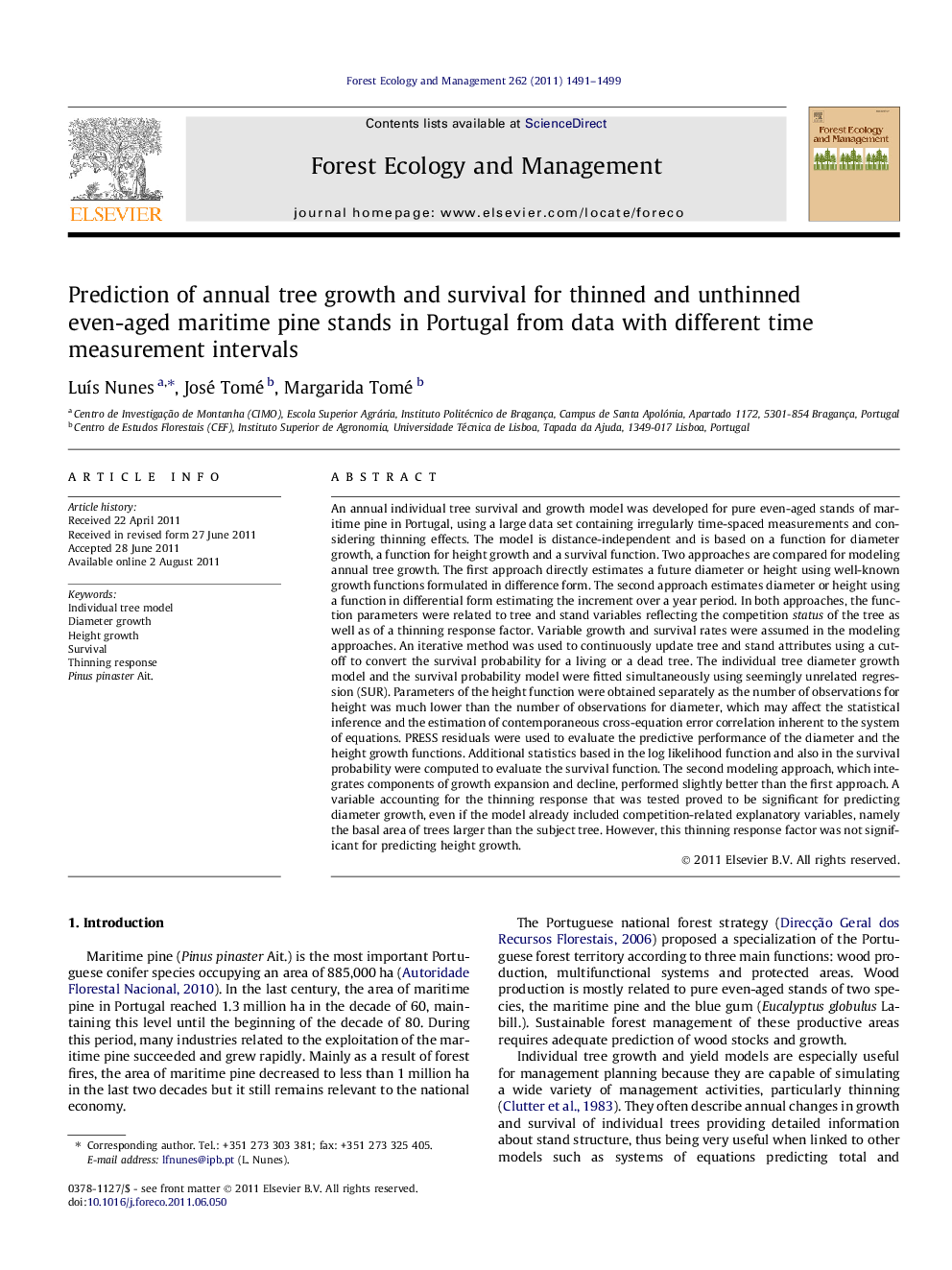| Article ID | Journal | Published Year | Pages | File Type |
|---|---|---|---|---|
| 87678 | Forest Ecology and Management | 2011 | 9 Pages |
An annual individual tree survival and growth model was developed for pure even-aged stands of maritime pine in Portugal, using a large data set containing irregularly time-spaced measurements and considering thinning effects. The model is distance-independent and is based on a function for diameter growth, a function for height growth and a survival function. Two approaches are compared for modeling annual tree growth. The first approach directly estimates a future diameter or height using well-known growth functions formulated in difference form. The second approach estimates diameter or height using a function in differential form estimating the increment over a year period. In both approaches, the function parameters were related to tree and stand variables reflecting the competition status of the tree as well as of a thinning response factor. Variable growth and survival rates were assumed in the modeling approaches. An iterative method was used to continuously update tree and stand attributes using a cut-off to convert the survival probability for a living or a dead tree. The individual tree diameter growth model and the survival probability model were fitted simultaneously using seemingly unrelated regression (SUR). Parameters of the height function were obtained separately as the number of observations for height was much lower than the number of observations for diameter, which may affect the statistical inference and the estimation of contemporaneous cross-equation error correlation inherent to the system of equations. PRESS residuals were used to evaluate the predictive performance of the diameter and the height growth functions. Additional statistics based in the log likelihood function and also in the survival probability were computed to evaluate the survival function. The second modeling approach, which integrates components of growth expansion and decline, performed slightly better than the first approach. A variable accounting for the thinning response that was tested proved to be significant for predicting diameter growth, even if the model already included competition-related explanatory variables, namely the basal area of trees larger than the subject tree. However, this thinning response factor was not significant for predicting height growth.
► An annual tree growth model is developed for even-aged maritime pine in Portugal. ► The model is distance-independent and considers variable growth and survival rates. ► Thinning intensity and time since thinning were considered in model formulations. ► Growth functions in difference and differential form were tested. ► Differential form performed slightly better than difference form.
